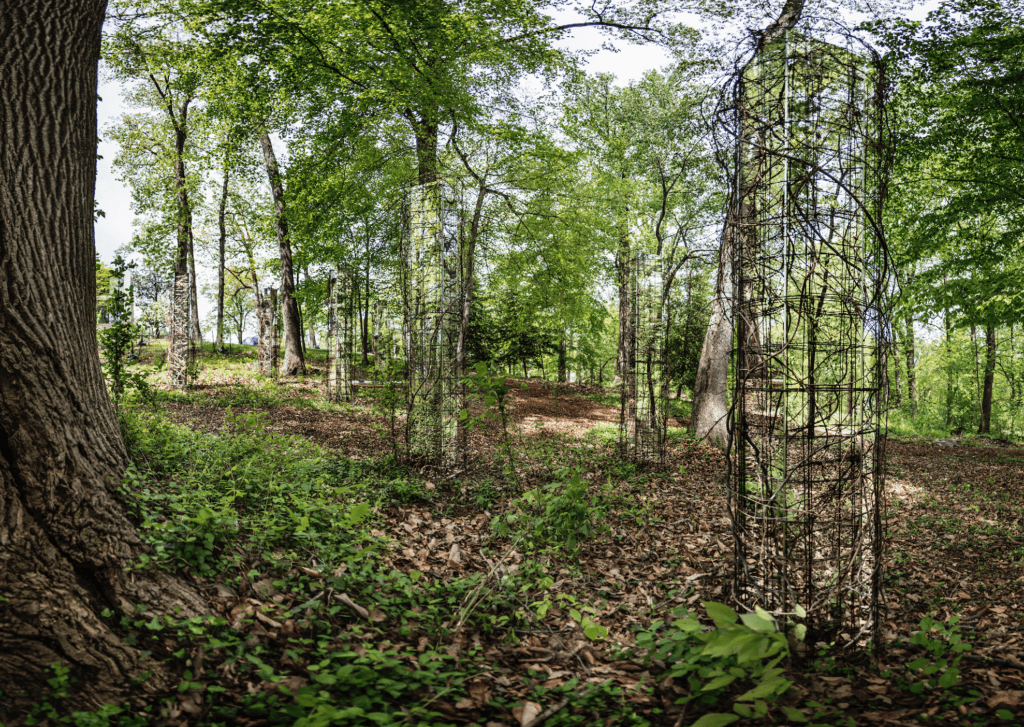‘Portals’ — and the Paris Accord
By • June 7, 2017 0 522

Our president plans to withdraw the United States from the Paris climate accord, a landmark agreement negotiated in 2015 by representatives of 195 countries. The accord signifies a commitment to work together to reduce the risks and impacts of climate change, with a unified goal of lowering greenhouse gas emissions and promoting the development of environmentally sustainable industry across the world. The only countries that did not sign the accord are Nicaragua and Syria, and the United States is already the biggest carbon polluter in history.
I think our president made a bad decision. But I am just the arts writer, and my job some would argue — and in moments of despair I will often agree — is rather disconnected from urgent or essential matters of the world. I suppose that writing about a museum exhibition could offer an audience some modicum of pleasant escapism in moments like this, and certainly there are more things happening in the world that deserve attention than just the headline news, but fine art is obviously near the bottom of the food chain when it comes to sociopolitical imperatives.
This is just as well, but I still find it irritating that the arts are so often defined as a fair-weather affair, divorced from reality.
Art is historically the first industry on the chopping block in times of economic or political turmoil. The arts industry is the first economy crippled by recessions and the last to recover. As workforces are concerned, artists are the first voices silenced when developing autocracies begin oppressing and persecuting their people, and the most viciously and unapologetically attacked by religious and political institutions.
On the other side of this coin, artists are among the first harbingers of developing neighborhoods. They build communities and create value in previously derelict areas, and then get forced out due to the inflated rent and development they galvanized. Art venues and theaters are signs of local prosperity and economic value, flaunted by real estate developers to attract young buyers. Frankly, the state of the arts should be more carefully evaluated as an economic bellwether.
Right now, there is a highly charged debate throughout our country regarding the short-term economic challenges of environmental safety regulations versus their effects on the long-term welfare of future generations. So it should be no great surprise that some artists are beginning to confront this in their work.
Here in Washington, the Kreeger Museum on May 19 opened a five-and-a-half-acre expansion of its remarkable sculpture garden, providing visitors with new opportunities to explore the relationship between art and the natural world.
Inaugurating the new space is “Portals,” a permanent installation by artist Sandra Muss. Composed of seven stainless steel and mirrored columns, each 10 feet tall and wrapped in wire, Muss’s work welcomes visitors into the woods and invites them to explore its mazelike arrangement.
“Portals” was conceived by Muss in response to the environment, reflecting the surroundings and the change of seasons and encouraging visitors to interact with the sculptures as they meander through the wooded gardens. Her installation incorporates the rhythms of nature; vines cling to the rusted wire and change with the seasons. The mirrored surfaces reflect and reveal as the vines conceal and complicate views, generating a complex visual field.
In a statement about the work, Muss writes: “Not only are the portals a doorway to a new path on this earth and nature, but also a doorway reflecting a path into oneself and one’s spiritual journey.”
It would be ridiculous to suggest that these conceptually beautiful pieces are critical social commentaries on global warming, but in their interaction with their natural environment they inevitably cause you to consider the effects of nature in our lives and our physical relationships to our environment. Like so much great art in the world, it is at once a reaction and a beautiful alternative to the world around us.
Art is a part of our natural environment. In many ways it is as tenuously and forebodingly dependent on our government’s economic decisions as the future of our natural environment. I suppose the difference is that we know art can recover from these effects. As for the environment, to hear our president tell it, it seems we’ll have to just wait and find out.

